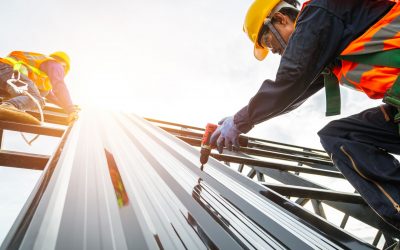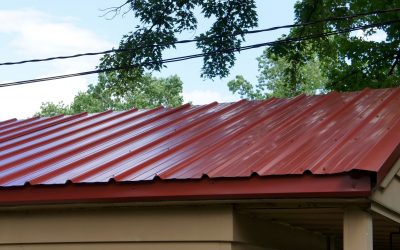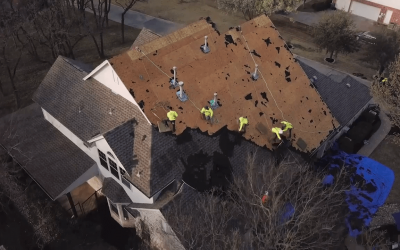When it comes to protecting a home or commercial building, the roof does a lot of heavy lifting. It shields us from rain, wind, blazing sun, and even the occasional storm. But here’s the big question: what kind of roof is tough enough to handle all that and still last for decades? One option you might not have heard much about but should is EPDM roofing.
If you’re wondering what EPDM is, why people choose it, and whether it could be right for your building, you’re in the right place.
What Exactly Is EPDM Roofing?
Think of EPDM roofing (short for Ethylene Propylene Diene Monomer) as a superhero version of rubber. It’s a durable, synthetic rubber material that’s been trusted in roofing for over 50 years.
You’ll usually see it on flat or low-slope roofs, like warehouses, schools, office buildings, and sometimes homes. Why? Because EPDM comes in large sheets that can be rolled out and sealed, meaning fewer seams and fewer chances for leaks.
The Big Benefits of EPDM Roofing
So, why do so many property owners and roofing contractors choose EPDM? Here are some standout perks:
- Long Lifespan – With proper care, an EPDM roof can last 25–30 years (sometimes even longer).
- Weather Resistant – From heavy rains to scorching heat, EPDM handles it all without cracking.
- Eco-Friendly – EPDM roofing is recyclable and energy efficient, especially when installed in lighter colors that reflect sunlight.
- Low Maintenance – Once it’s installed, it doesn’t demand constant attention.
- Cost-Effective – Compared to other commercial roofing systems, EPDM often has a lower upfront cost.
It’s kind of like the reliable car you can count on for years, it may not always be flashy, but it gets the job done incredibly well.
How Is EPDM Roofing Installed?
EPDM installation depends on the building, but there are three main methods:
- Fully Adhered – The EPDM membrane is glued directly to the roof surface.
- Ballasted – The sheet is laid down and secured with heavy stones or pavers.
- Mechanically Attached – Fasteners are used to hold the membrane in place.
Each method has its pros and cons, and the choice usually depends on budget, roof size, and climate. The good news? Once installed correctly, EPDM roofing creates a seamless barrier against the elements.
EPDM vs. Other Roofing Options
You might be thinking: “How does EPDM stack up against other roofing materials?”
- EPDM vs. TPO – Both are popular for flat roofs, but TPO often comes in white, which reflects heat better. EPDM, however, is known for its durability and proven track record.
- EPDM vs. PVC – PVC can be stronger but tends to cost more. EPDM is the budget-friendly option that still lasts for decades.
- EPDM vs. Asphalt – Asphalt shingles don’t perform well on flat roofs, which makes EPDM the smarter choice in those situations.
In short, EPDM shines when you need a reliable, low-slope roofing solution without breaking the bank.
Common Questions About EPDM Roofing
Does EPDM come in colors?
– Yes! Traditionally it’s black, but lighter colors (like white) are available to help reflect sunlight and reduce cooling costs.
Can EPDM be repaired if damaged?
– Absolutely. Small punctures or tears can be patched without replacing the whole roof.
Is EPDM roofing only for commercial buildings?
– Not at all. While it’s more common on large buildings, some homeowners use it for flat-roofed sections of their homes.
How to Care for and Maintain an EPDM Roof
One of the best things about EPDM roofing is how low maintenance it is compared to other roofing materials. Still, a little care goes a long way in keeping it in great shape for decades. Here are a few simple tips:
- Regular Inspections: Check your roof at least twice a year, especially after storms. Look out for loose seams, punctures, or debris.
- Keep It Clean: Sweep away leaves, branches, or dirt. Debris that sits too long can trap moisture and cause problems.
- Address Small Issues Quickly: If you notice a small tear or puncture, get it patched right away. EPDM is easy to repair, and a quick fix now can save you from a bigger problem later.
- Check Drainage Systems: Make sure gutters and drains aren’t clogged. Standing water can shorten the lifespan of any roof, even durable EPDM.
With a little routine care, your EPDM roof can last 30–50 years making it one of the most reliable and cost-effective roofing choices around.
Ready to Learn More About EPDM Roofing?
If you’re curious about whether EPDM roofing is the right fit for your home or business, it’s always best to start by talking with a trusted roofing professional. A simple conversation can give you peace of mind and help you understand the best options for your roof.
At Quick Roofing, we’re here to share knowledge and guide you toward the right solution without the pressure. Whether you’re replacing a roof, looking for long-term durability, or just want to explore your options, our team is happy to help.
Reach out to Quick Roofing today and let’s talk about your roofing needs.




